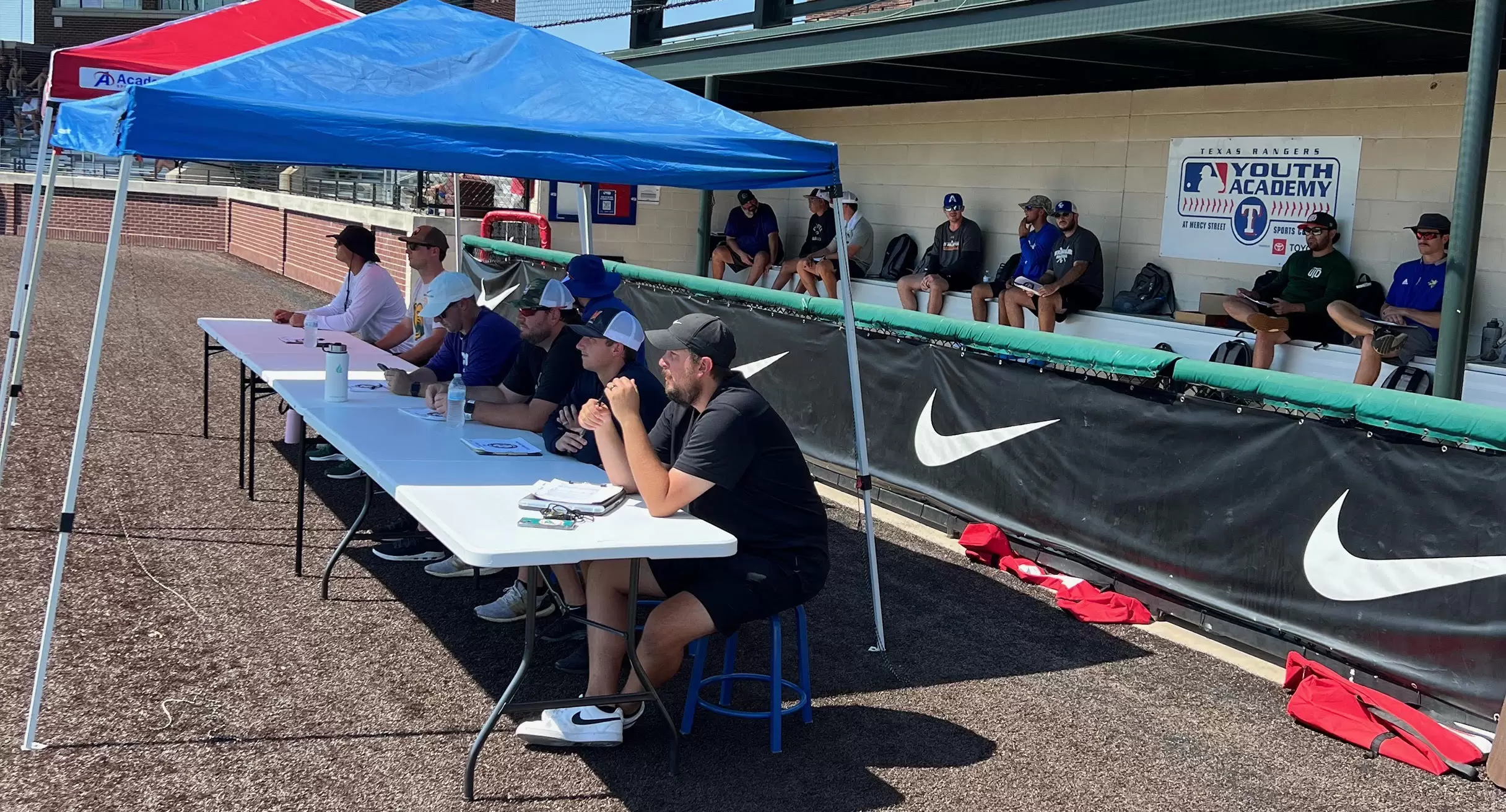Believe it or not, this time of the year some college programs are often trying to figure out “what we got” in their senior class. Yes, the same senior class signed and just weeks - maybe longer than a month if they’re lucky - away from their final high school game before enrolling in college a few months from now. Well, if they make it there.
Evaluating signees, some of whom committed to their respective programs years ago, this late in the process to figure out if they’re good enough to keep their spot doesn’t make sense. Besides the obvious, an awkward situation where programs sometimes encourage kids to “decommit” to find playing time elsewhere, it doesn’t make sense because so much time is spent now by college coaching staffs recruiting sophomores, freshmen, eighth graders and even seventh graders instead of thoroughly keeping track of upperclassmen, including their own signees. The quest to get ahead of the pack and offer a projected top prospect is sometimes taking the place and time of extensively evaluating upperclassmen.
Late last week, the NCAA took a big step towards steering college baseball’s recruiting back on course by hitting the brakes on early recruiting and commitments. Beginning April 26th, new recruiting rules and a new calendar will go into place, and the dramatic change is this: no contact will be allowed between players/families and college coaches until August 1st of the player’s junior year (think of the summer after sophomore year leading into August ahead of junior school year). In the past, there was a way around the contact rules. A player could reach out on his own because what was prohibited was the contact going one way - from college coach to player. The NCAA ended that and all contact until the new contact period begins.
“This is going to be healthier for everyone. Players will be able to focus on playing, having fun, winning, developing, etc. Parents shouldn’t have to worry about keeping up with other parents and their kids' commitments,” said a West Coast D1 head coach. “And coaches will be able to make better decisions, and not have to worry about 6-7 different classes at the same time. I hope that this will lead to fewer decommits, and a better experience for the players, coaches, and parents."
And before we get further, let’s get four things straight:
- Some, definitely not all, college programs treat way-too-early commitments like reservations to a restaurant; you’re free to cancel with no penalty as long as you do it early enough.
- Secondly, because the college season is concurrent with the high school season, college coaches don’t have extensive time to get out and see players during their high school seasons. They do have some time, and it’s obvious who goes out and does the work and who doesn’t. But this isn’t like football, which gives coaches a Friday night to go see a game before their game Saturday.
- Third, there will be some teams who view this rule change as a suggestion instead of legislation. After all, this is college athletics where winning means money. You can bet there are some coaches talking to basketball coaches right now about WhatsApp and multiple cell phones. In the past, spotting the rulebreakers wasn’t easy. Now? They’ll stick out like an 86 MPH fastball with poor movement against a SEC lineup. Rumors of “silent commitments” will swirl, but no sport gossips quite like baseball, which means rulebreakers will probably be forced to tread lightly.
- Finally college camps are fine and probably become more important than they already are. Players and coaches can't specifically discuss recruiting during the camp, but are free to talk. Obviously, it would be a bit odd to attend a camp and not have contact with anyone running the camp. Considering where many fall on the calendar, camps will continue to be a great way for coaches and players to leverage the recruiting process to their advantage.
Years ago it became common practice for high-major D1 programs to begin taking commitments from freshmen and sophomores and sometimes even middle schoolers, too. With no risk for the college coaches, they were free to, for lack of a better phrase, make educated guesses on players who were sometimes three, four, five and even six years away from high school graduation.
When the NCAA Transfer Portal arrived, a common day in the summer for a recruiting coordinator might be a conversation with a 23-year-old in the portal and a text message from a 15-year-old within minutes of each other. Off the record, some college coaches would tell you they didn’t want to commit freshmen in high school, but felt obligated to because if they didn’t, someone else would. And the allure of landing the next Team USA 14U star whose ceiling as a player appeared to be - because it’s extremely rare to truly know at that age - in the elite tier of prospects his age was too difficult to say ‘no’ to. Now, college coaches won’t have that option.

“I think the intent of the new rule is great for all parties involved. Recruits and programs should now be able to make better, more informed decisions. Kids will be more mature and have a better idea of what they are looking for in a program. Coaches will be able to understand their needs for each recruiting class much better and not have to project on a 14-15-year-old-kid,” said a longtime, high-major D1 recruiting coordinator. “It should also take the pressure off families to make a decision when they aren’t ready to make a decision. Kids of the same class will all be committing in a similar timeframe.”
Are there players who are that good before they even enter high school baseball? Yes, there are. I remember on an unusually warm, late October day in 2021 watching Lucas Franco, now a 2025 TCU commitment from Cinco Ranch, hit and knowing right away his talent and skill were rare with a surprisingly low chance he wasn’t going to be awesome. But for every unmistakably elite talent, who still isn’t guaranteed success, there are probably 20 early commitments that don’t work for whatever reason because some of it falls on the players’ shoulders, too; while there is certainly more traffic, control and responsibility running one direction, recruiting is a two-way street because players who sit back and don't get better open themselves up to re-evaluating their recruiting process. Forcing all parties involved to slow their collective roll should be beneficial to everyone and to the sport.
Both families and colleges should make better, more informed decisions because the race to being the next freshmen commitment has been cancelled. Both families and colleges should make better, more informed decisions because players will be more mature and families more knowledgeable while colleges should be able to more extensively evaluate the players they’ll recruit as juniors and seniors. Both families and colleges should make better, more informed decisions because both will have a better idea of what they’re looking for and what they’re looking at instead of falling in love at first sight with no strings attached for the programs.
“This is a welcome change for all involved. It will give kids and their families an opportunity to make an educated decision at an older age,” stated a Big 12 assistant coach. “It will also give coaches an opportunity to conduct a thorough evaluation of a prospect which should lead to less mistakes. This will also improve the work/life balance for coaches and staffs. It’s long overdue and a step in the right direction.”
Sure, college coaches will still evaluate underclassmen. It would be silly not to. The interest in evaluating and learning about the up-and-coming prospect won't significantly change; it'll simply be re-arranged on the priority list for college coaches. They’ll need to be prepared for how to tackle the junior class once it’s eligible to receive a scholarship offer and will want an idea of who is up-and-coming as sophomores and freshmen. I do think there are college staffs currently who rightfully take great pride in their recruiting work and flat out beating people. This change might not be welcomed by those coaches, but just because they can’t offer sophomores and younger doesn’t mean they won’t be better prepared to strike on August 1st. Instead of playing catch up in evaluating upperclassmen, including some of their own signees, college coaches will now, if they fall behind, be playing catch up on prospects they can’t even offer. And logically, that makes way more sense than the other way around.
Meanwhile, the families and players might be the big winner because what once was a difficult recruiting process to grasp, compared to sports like football, basketball, softball and others, should become much easier to deal with. Players and families now have a very clear timeline of when contact and offers can begin. Instead of falling victim to comparing themselves to other kids making very early commitments and navigating a confusing process without true knowledge of how it occurs, players and families should be able to better enjoy the game, the development process and won’t lose sleep worrying about a potential D1 scholarship before a driver’s license.
“The new recruiting model should benefit college baseball as we will have a better idea of where players are in both maturity and development. Up-and-coming recruits will now have more time to prioritize development and playing the game as opposed to worrying about committing or being recruited,” a former longtime recruiting coordinator and current D1 head coach said.
I’d be lying if I said I knew how this would exactly play out, but what’s the negative? Less stress for coaches, players and families. More time to make better decisions for coaches, players and families. Focus returning to the game instead of a player trying to get a D1 coach’s attention before his first varsity game. The possibility of fewer decommits and less of a reliance on the Transfer Portal to solve mistakes in recruiting and roster management. I have a hard time forecasting a negative outcome that will be associated with recruiting conversations and offers now being forced to wait until everyone has more information.
And perhaps an unintended positive development will occur: more fan interest in baseball recruiting and the sport in general.
(Five Tool's Drew Bishop contributed to this story.)
Dustin McComas
Senior Editor